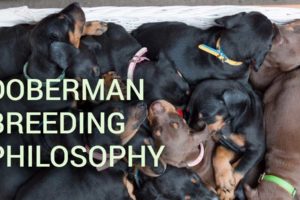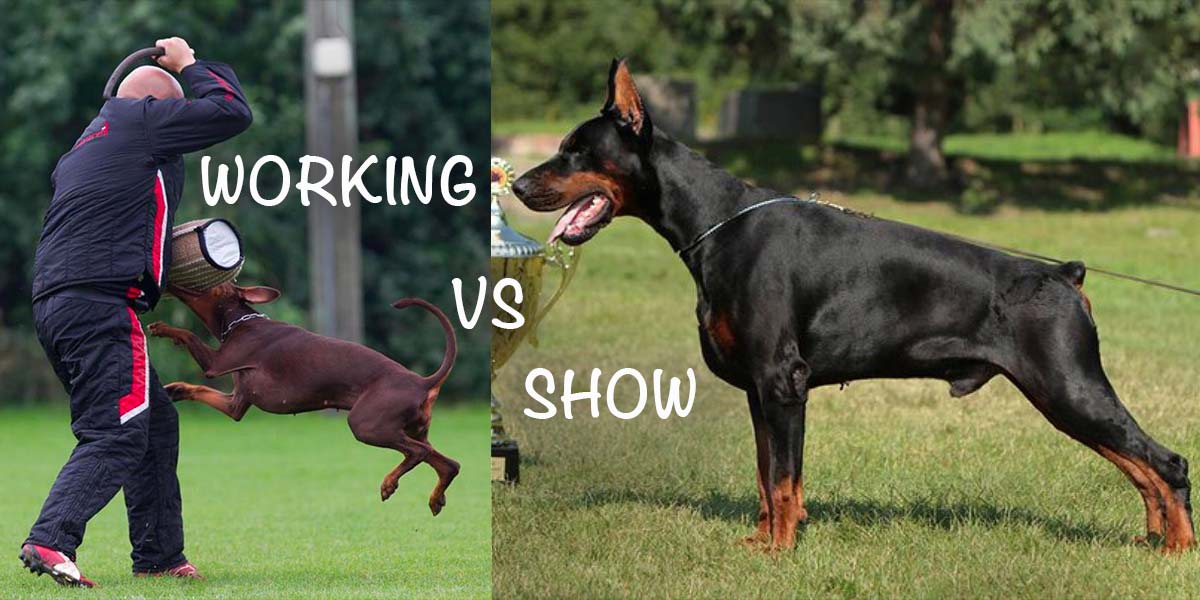
What is a working doberman? What is a show doberman? Is there a difference between working doberman vs show doberman?
Doberman was created around 1890s in Germany by a tax collector to assist him in his job. The dogs lived with their master and had to be also good companion dogs. As a personal protection dog, the Doberman was originally bred to be large and intimidating, fearless, and willing to defend its owner, but sufficiently obedient and restrained to do so only on command.
During the World War II the breed was widely used in the army all over the world – in Europe and in the US. Post war Dobermans were reliable working dogs in military and law enforcement (US and Europe). But the time was changing.
Doberman was created to perform certain duties. Like any other breed, it has a standard that regulates body type, mental strength, and working ability. The written standard somewhat varies between AKC (the US) club and FCI (European) club. But the difference between American vs European doberman, and European working doberman vs show doberman is dramatically noticeable. (to read more about the difference between American vs European Doberman, follow the link).
American Doberman Pinscher.
Nowadays, there are no American working Doberman lines. AKC doesn’t encourage (or regulate) performance of the breed. It only regulates the shape of the body. AKC breeders mainly focus on perfecting the elegant silhouette of a Doberman. This fashion had developed a dog that not only mentally weak, but also physically can not perform any work due to fragile body, long necks and weak jaws. You have to understand that if you breed dogs only for their long necks (for example), you overlook or compromise over temperament in order to achieve your goal – a Doberman with an elegant long neck. In general, such breeding philosophy led to complete loss of natural working qualities and stable temperament in the American Doberman Pinscher. There are some AKC breeders that want to re-create a Doberman with some working ability, but really struggle to achieve that. Any working Doberman lines in the US come from European Doberman lines.
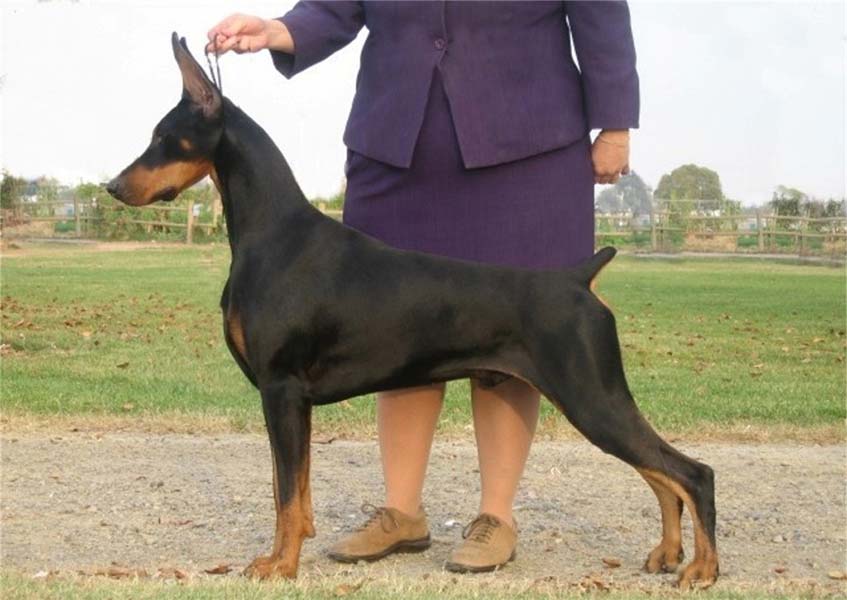
American Doberman Pinscher
Western European Dobermans.
Germany, being the country of origin and the guardian of the breed’s standard, was a leading country in producing strong Dobermans who performed their working duties and presented well in shows. The breed was gaining popularity with public, while the need of strong military dogs was declining. Not to mention that after World War II Germany spent decades recovering its peaceful image as a country.
Show breeding was (and is) more profitable business. So, at some point, the split was inevitable. Commercial breeding, corruption and politics within the Doberman organization in Germany led to the split of the breed into show lines and working lines. Show lines breeders focused on producing dogs that do well in shows and become good family companions. While working line breeders focused on preserving working qualities and physical strength of the breed. This created two different gene pools and that’s why the split into working doberman vs show doberman is more pronounced in Western Europe.
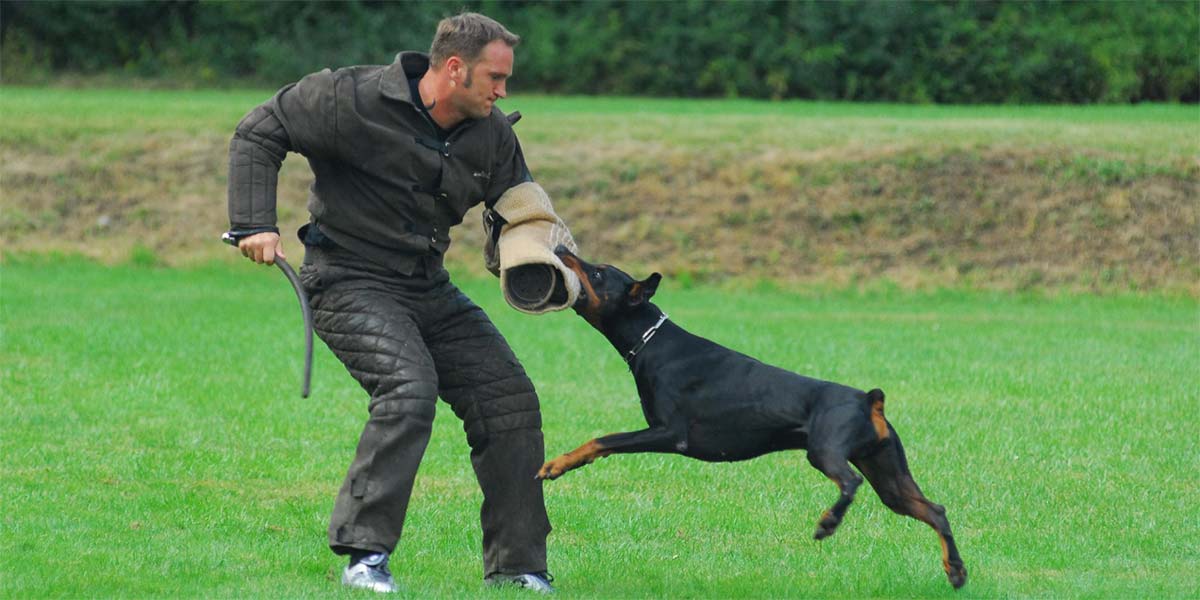
Working German Doberman
Eastern European Dobermans.
Eastern Europe gene pool is built on the dogs that were imported. Russia – is one of the largest countries in Eastern Europe. Its influence on the Eastern European Doberman breed is significant. After the World War II East and West Europe were divided, so Germany didn’t have as much influence on what was bred in Eastern Europe.
In Russia the breed was developed by a handful of enthusiasts and it was more or less officially established by the mid of 1960s. A handful of people managed to travel to Germany and import dogs with great balance in conformation and working qualities.
Either its due to the limited access to popular German lines in Eastern Europe, or due to different understanding of genetics – Eastern European Doberman lines are by far more inbred, than those in Western Europe. Having a different fashion for the breed, different gene pool, different breeding philosophy, and different judges to obey in shows – Eastern Europe developed its own type of the Doberman. Eastern European Doberman has noticeably heavier bone structure, larger head type, and very deep chest. Inbreeding also resulted in strong health issues, which are slightly different than health issues with Western European lines.
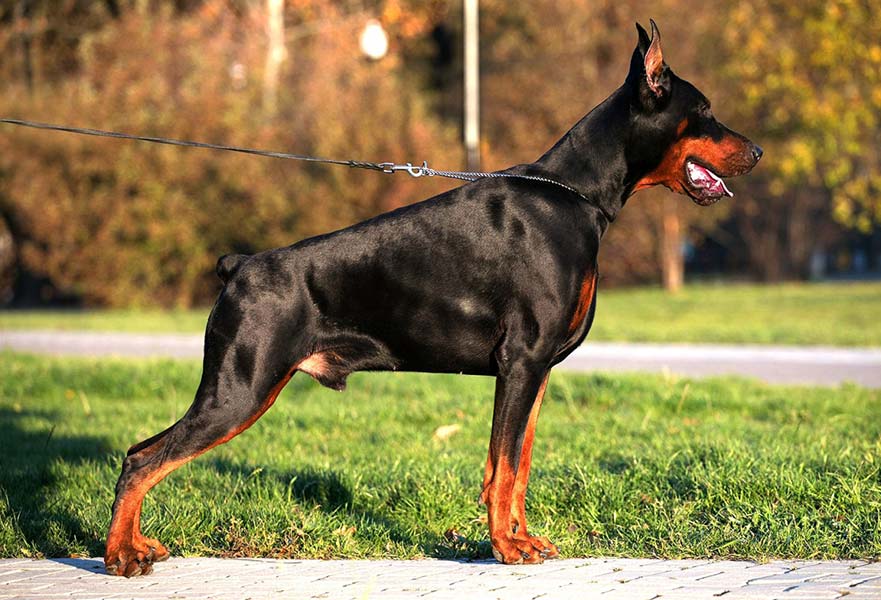
Eastern European show Doberman
Being originally from Eastern Europe, I want to point out that the need of a good protection dog is more acute in these countries than the rest of the world. Doberman is a working breed. People who are interested in this breed – are interested in having a good protection dog for their family. So, despite the lack of breed regulations from Germany (country of breed’s origin), the demand for a protection dog was high.
The split in the type in Eastern Europe was different. Eastern Europe started with the gene pool of a well-balanced doberman type (not pure working lines) and split into show dogs and those, who continued with the well-balanced type.
Social and economics changes allowed mobility in Eastern Europe. Nowadays, Eastern European Dobermans participate in shows all over the Europe and have to pass the same breed survey as their distant relatives from Western Europe. There are more and more lines that are mixed with Western European lines. Though Western European breeders are not as eager to mix with Eastern lines.
Conclusion.
In a nutshell, European Doberman breeders can be categorized as show Doberman breeders, and working Doberman breeders. And there are very few breeders who look at the breed as a whole (well-balanced) and continue to create Dobermans that have beautiful show looks while maintaining its original working qualities.
Breeding a dog with good working ability and good show performance is very difficult. You have to look at the body, mental stability, working qualities – it is a very difficult task to find a good mating combination. When you only focus on one trait – either body type or working ability – it makes breeding a lot simpler and faster to produce the desired type. But focusing only on one trait leads to exaggerations: body types with huge chests or sloped backs, dogs that are overly aggressive. And this type of breeding takes us further away from the original Doberman – a beautiful and loyal companion dog and strong and fearless family protector.
Please note, that many breeders claim to breed a “whole doberman” and write about it on their websites (I’ve seen it even on the AKC (US) breeder websites), but in reality – only few breeders have maintained those bloodlines and have knowledge how to achieve this.
You have to understand the difference in breeding philosophy in order to understand the difference between working doberman vs show doberman.
NOTE: photos, used in this article, were found on Google, represent the referenced type of a Doberman, but do not promote any particular dogs or kennels.


